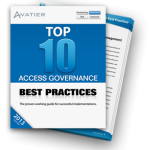If ever organizations questioned the need for IT Risk Management Software, one simple statistic about cyber security cited recently in the National Law Review should change their minds:
“According to Diligence Information Security, about 70 percent of security breaches are committed by employees.”
Yes, those dedicated individuals who depend upon your organization for their livelihood could very well be your worst enemy. The problem is, they might not even know it! The article in National Law Review actually opens by citing “an ethical hacker” who says that employers fall into one of two categories: “those that know they have been hacked, and those that do not.”
While that might seem to oversimplify things, it is the truth. Granted, most companies will eventually know they have been hacked either because the information will be used against them or, as in the case of a Distributed Denial of Service (DDOS) attack, their web site or IT system will be brought down. The key is to know about the attack before it can do harm to your organization’s business and reputation.
That’s where IT Risk Management Software comes in. IT risk management software marries enterprise risk management to business performance management to create an environment of proactive risk management that automates security measures and alerts organizations to suspicious activities and lets them meet IT risks head-on.
In order to lower IT Risks, a holistic approach to identity management should be a top priority. Surprisingly, introducing self-service capabilities is one of the key elements to make this a reality because it makes the business accountable for securing their own assets.
Here’s how self-service administration can help with IT risk management:
- IT Service Catalog User Provisioning: combine IT automation and self-service administration in an IT Store-type of environment to ensure the right people have the right access to systems, software, subscriptions, facilities, equipment, assets, groups and assignments
- Self-Service Group Management: bring automated group management to the user level provides an agile way to configure and fully automate group membership, email distribution, audits, role-based access control and group security policies… not to mention self-service makes IT’s job a whole lot easier and more effective too.
- Access Governance: automates access certification compliance management and helps ensure users have appropriate access at all times, because managers are responsible for staff access governance monitoring and administration.
- Identity Intelligence: utilize IT automation and unmanned administration to alert organizations to governance abnormalities and unauthorized access. Unmanned administration also allows organizations to clean up user accounts, correlate data across an enterprise, certify access and present a holistic picture of account privileges, role structures and access exceptions
- Self-Service Password Reset: make automated password reset tools available to users. Self-service administration lets them reset, unlock and synchronize enterprise passwords from virtually any system or device using a web portal, phone system, RSA token and two-factor authentication, while allowing organizations to automatically enforce enterprise password management policies
- Balanced Scorecard Software: turn security metrics into an actionable risk management dashboard by visually representing an organization’s complete corporate risk profile and trends that can point to potential problem areas.
There’s an old African proverb I frequently like to quote that says, “When there is no enemy within, the enemies outside cannot hurt you.” IT Risk Management Software can help organizations ensure that their own employees — regardless of whether it’s willingly or unwillingly — do not become that “Enemy Within.”
Watch the Avatier Lifecycle Management product introduction video to learn more about the need for IT Risk Management Software.
 Get Your Free Top 10 Access Governance Best Practices Workbook
Get Your Free Top 10 Access Governance Best Practices Workbook
Learn the top 10 Access Governance Best Practices for successful implementations from experts. Sidestep the challenges that can derail GRC software and compliance management projects.




